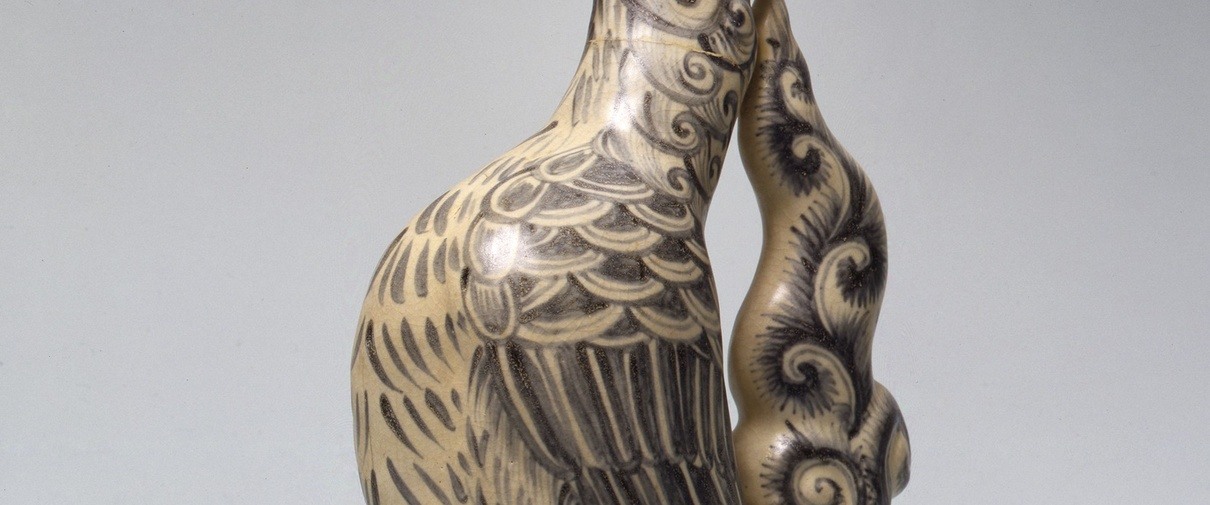Vietnamese phoenix
The bird opens its mouth wide. Its proudly raised head is adorned with a beautifully worked crest, and the detailed wings lie tight against its body. They are decorated with scattered, feather-like clusters, painted in underglaze blue. On the back is a whimsically shaped handle and the bird's beak is the spout. It is a surprising shape for a sixteenth-century jug. At least as surprising is that it was made in Vietnam.
The Princessehof National Museum of Ceramics is best known for its extensive collection of Chinese and Japanese ceramics. Fewer people know that the museum also has a number of special objects from Thailand and Vietnam. The imaginatively designed phoenix jug is one of the most spectacular examples. How is it possible that this type of early-dated ceramics comes from Vietnam, which is not really known as a ceramic country?
This has to do with the potters of China. In the late fifteenth century and early sixteenth century, Vietnamese ceramics flourished, because the Chinese government had banned the export of Chinese ceramics. Many Chinese potters then went to Vietnam in search of work. There they shared their skills with their colleagues. The Vietnamese quickly jumped into the gap that had arisen in the market. They traded Vietnamese ceramics with neighbouring countries Thailand and Burma, but also with more distant countries such as the Philippines and Indonesia. Vietnam experienced its own Golden Age.
Especially ceramics in imaginative shapes proved popular. The Vietnamese potters therefore produced vessels in the shape of birds, mammals and human figures during this period. Including this great pouring jug. The jug was probably found in Indonesia. This type of vessel was more often found there, because Chinese and Southeast Asian ceramics were traded there in abundance. We do not know what these types of jugs were used for. Certainly not for coffee or tea, but perhaps for alcoholic drinks during banquets and rituals.
